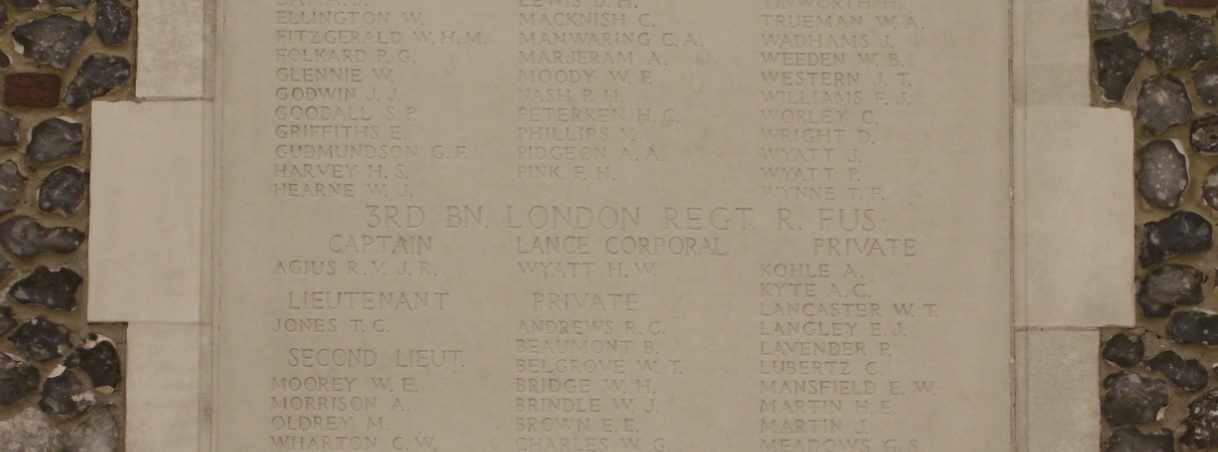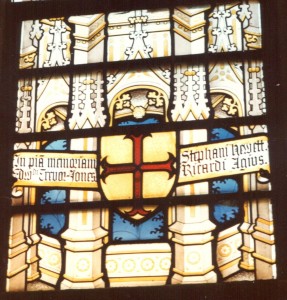This account of Richard’s life draws on two main sources. The first is his obituary, published in “Downside and the War 1914-
A number of battalion dates of movement/transfer are taken from Chris Baker’s website “The Long, Long Trail” which has a comprehensive section on the formation and deployment of the Battalions of the London Regiment, Territorial Force.
“An active and enthusiastic nature”
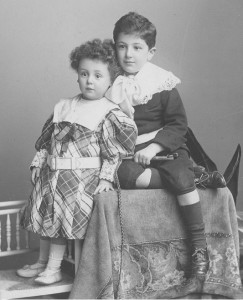
Richard Victor Joseph Roy Agius, born 19 September 1896, was the youngest of the fifteen Agius children, and the only child to arrive after the family’s final move to their new home in Belsize Grove, Hampstead.
He received his early education at St. Mary’s, St. Leonards-
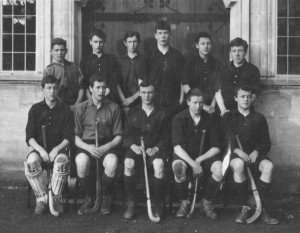
His was an active and enthusiastic nature, deeply religious, and full of energy and zeal in work and games. He passed the Lower Certificate in 1910 and 1911, and the Higher Certificate in each of the three following years. He played in the Hockey Eleven and in the Cricket Second Eleven, and represented his house (Roberts) on many occasions at Cricket, Hockey, Football and Sports.
He was a very keen member of the O.T.C., took part in two House Competitions, and attained the rank of sergeant in 1913, in which year he won a silver medal in the Gregorian Shooting Competition. During his last year at Downside [1914] he was one of the School Prefects.
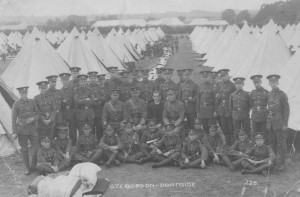
“Called to another duty first”
Richard left Downside School in the summer of 1914. When Britain declared war on Germany that August he was almost two months short of eighteen and too young for an Army Commission. His brothers Alfred, Edgar & Arthur, had already responded to the “Great Call”:
And he, the youngest, felt that the call of duty beckoned him along the same road, and his immediate task was to prepare himself to fulfil it. He had [previously revealed his intention] to join the Religious Order which had watched over his own education.
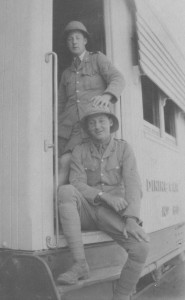
But he felt that God called him to another duty first, and though nervous by nature –
He spent the intervening weeks in drilling volunteers in plain clothes in the park, and in digging trenches in the garden and working out operations at his desk. At last the Commission arrived and was received with a mingled enthusiasm and pride. To his relatives and others, it seemed a warrant for separation, for danger, perhaps for disaster. But to him it came personally from the King – with the Divine sanction behind it.
The 2/3rd (City of London) Battalion was formed in London in September 1914; they trained at Epsom Downs and Tonbridge, becoming part of the 2/1st London Brigade. At the end of December, after only four months in uniform, Richard found himself on the high seas, en route for Malta. His brigade arrived on the island in January 1915, to replace the 1/3rd Londons – stationed on garrison duty there since the previous September. So as brothers Alfred and Arthur left the island for France and the Western Front, Richard began his first overseas duty.
There in practise night operations, he had still to fight out the battle between his innate nervousness and the demands of his office; and quickly his zeal, his energy, his tenacity of purpose conquered and he became a more finely sensitised leader than those who had no fears to overcome.
Richard was sure of a warm family welcome in Malta, for by 1914 three of his sisters had married and settled on the island and there were many young Cassar, Denaro and Arrigo nephews and nieces to entertain him in off-
In April 1915 Richard left Malta as his Brigade made for Alexandria in Egypt: and we hear of him trying, amid the busy confusion of disembarking, to secure a chaplain to hear the confessions of his Catholic men. Alexandria was the birthplace of his father Edward, in 1849 – so another homecoming of sorts for Richard – but not for long, as the battalion moved down river to Khartoum, in the Sudan.
“The Diversion at Suvla Bay”
From the Sudan and Egypt, his Battalion eventually went on to land at Cape Helles (Gallipoli) in September 1915 and took part in the fighting at Suvla Bay.
Tancred gave a vivid and detailed account in his sermon of the flooding endured by Richard and his men that December. The trench in which they were posted ran down the side of a slight hill and across the valley:
One night, not feeling very well, he lay in his dug-

Next day the wind changed to North and frost set in. Numbed but still vigilant, the young officer organised the defences as best he might. At last they were relieved; but his feet were frozen and it was many days before he could walk again.
Richard was invalided to Mudros in December 1915, but soon rejoined his unit in Egypt. In April 1916 they moved to France, where in June 1916 the 2/3 Londons were disbanded at Rouen. The 3/3 Londons became the 2/3 Londons (in 173rd Brigade in 58th Division). Richard was posted back to England where he was with the 4/3 London Reserve Battalion for a few months with brothers Alfred and Edgar.
In July 1916 Richard had his first and last leave, during which he paid a visit to his old school, Downside. That summer the Agius family holidayed at Painswick in Gloucestershire and Tancred and Richard went for long walks together. Even then he:
…would have his compass and field glasses with him, studying the country, making calculations, perfecting his practical knowledge. No wonder it was said of him that he was “too keen for his men”.
Richard’s old sickness was still a problem and he was not passed fit for service abroad until the spring of 1917. While serving with the reserve battalion he received the permanent rank of lieutenant in June 1916 and that of captain in the following December. On May 24th, 1917, he left for the Western Front and re-joined the 2/3rd Londons.
“In a Tent Near Mory”
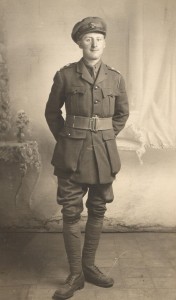
In April 1917 brother Tancred left Downside for a year and became a chaplain to the BEF on the Western Front. He was to meet with Richard a few times over the coming months. They encountered each other quite unexpectedly in mid June. For a while Richard’s Division (the 58th) and Tancred’s (the 21st) had been within 6 miles of each other – unknown to both brothers. Once the proximity was discovered Tancred set off to find him –
The RC’s were paraded, received the Sacraments, and then we three spent together one of the happiest evenings of my life [in a tent near Mory].
Five days after the battle Tancred returned to the camp, not knowing if either brother had survived. Edgar thankfully had not been involved in the recent action – but an incoming shell had missed him by inches, and by some wonderful miracle failed to explode. Richard meanwhile had lived through a disastrous battle, which left him and another young officer (a young public school boy and a recent recruit) – as the sole surviving officers of two companies.
[Richard had]… taken charge of the situation and acquitted himself well, though the eye of authority was not there to observe it. Together we sat and read letters from home. And it was my privilege to give them Holy Communion before we parted.
Tancred saw his brother for the last time, when Richard’s regiment moved out of the line and they were in a rest village a few miles back:
Well I remember that pleasant country village, hidden in the trees, surrounded by fields freshly green as our men gathered in the hay in the evening sunlight. It seemed so calm, so peaceful, in such utter contrast to the discordant strife and sudden death witnessed every day. Once or twice I visited the village, but my brother had gone to a rest camp at Valery-
“With his face to the foe”
That autumn [1917] began the Passchendaele offensive and Tancred was so caught up in that “eventful and calamitous time” to think of little else but doing his duty. Then after a while he noticed no reference to Richard in any letters from home – and then came anxious enquiries. Tancred returned from sick leave on 26th October – as usual he went from Battery to Battery on the vast battlefield, visiting the guns.
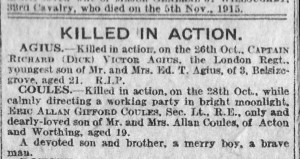 Some German prisoners were coming back and a few hundred yards of ground had been won. It was on that day that my brother fell. Not until November 6th did I hear the news. On that day as I returned to camp after a long day among the guns, my Captain met me at the gate. “Have you seen the news?” he said, then hesitated, not knowing how to begin… In the tent I found a copy of the “Times”. Heading the casualty list was my brother’s name.
Some German prisoners were coming back and a few hundred yards of ground had been won. It was on that day that my brother fell. Not until November 6th did I hear the news. On that day as I returned to camp after a long day among the guns, my Captain met me at the gate. “Have you seen the news?” he said, then hesitated, not knowing how to begin… In the tent I found a copy of the “Times”. Heading the casualty list was my brother’s name.
Next day I found his regiment and spoke with his brother officers and the only sergeant that had come back. There was little to tell. He had been very keen as always. The ground was heavy, and, as he led his men on – with his face to the foe – a bullet had pierced his helmet and so he died. His body was never recovered.
Richard served on the Western Front without a break, from the end of May until his death in action at Poelcapelle, near Ypres, on the following October 26th, 1917. He was killed instantaneously, shot through the head, leading his company to the assault.
“I am going in, putting all my trust in God”
It was the brothers’ habit when they were about to go into battle to write a letter and leave it in safe hands, in case they failed to return. Richard’s “stunt” letter to his parents has been preserved by the family. The letter begins:
This is just a short note in case of anything happening. But whatever does happen, it is all for the best and only what God wills for us… I am going in, putting all my trust in God, and may He do what he wills. I will try and do my bit and take things as they come.
 In his 1923 memorial sermon Tancred was to use many quotes from this, Richard’s last letter:
In his 1923 memorial sermon Tancred was to use many quotes from this, Richard’s last letter:
First then he went in to action ready for death. “I was very fortunate”, he wrote on the Monday before that fatal Friday, writing amid the bustle of preparation for battle, “I was very fortunate in being able to get to Mass and Holy Communion this morning”. If you had known him you would be able to imagine what that meant to him.
Richard had no thought for himself, no regrets for the years that were not to be his. He continued:
… the one thing I am sorry for is that I have not had much chance of showing how grateful I am to you all for what you have done for me. I shall never be able to make up for all, but only hope you will take the wish for the deed.
As a young man, writing at a time of great stress, this must surely show the truest index of his real character, thinking not of himself, but of those who would be left behind to mourn:
…You must try to take things as they come as well. Though I know how very much harder it will be for you all… Please don’t be too upset if I do go, as it really is all for the best.
There are other themes in the letter – a thought for the grandchildren, his nephews and nieces –
I could go on writing for ever, but just remember how proud I am to do my bit, and keep up the tradition of the family.
“Known only unto God”
Family tradition has it that Richard’s body sank into the mud and was never recovered from the battlefield at Poelcapelle. In the 1920’s his brother Arthur contacted the Imperial War Graves Commission – now the Commonwealth War Graves Commission. He had heard remains were still being recovered from the battlefield, due to the unusually dry summer, but his enquiries met with no success. Tancred was to comment in his memorial sermon of 1923:
My brother was one of that vast number whose names and achievements were lost in the magnitude of the enterprise in which they were engaged, and remain known only to those about them, and to their intimate friends… It was often mere accident that individual deeds were perceived and recorded, more often the deed was done in isolation, away from the applauding onlookers, and the memory of it perished with the doer.
Richard is now remembered with honour on the Tyne Cot Memorial to the Missing of the Ypres Salient, in Zonnebeke, West Vlaanderen, Belgium (Panel 149). His name is also recorded (with three other men who intended to join the monastery after the war) in a stained glass window in the Lady Chapel at Downside Abbey:
In piam memoriam … Ricardi Agius desiderio monachi qui in acie sunt interfecti MCMXIV-
As many Downside old boys will know, Richard’s photograph is on permanent display in the school corridor leading from the main hall to the science block. Here are shown portraits of all “Old Gregorians” who died in the Great War.
And finally, in St Mary’s Cemetery, Kensal Green, London (Grave No. 7288) Arthur Agius records that the following inscription was added to the gravestone of their father Edward Tancred (who died in 1924):
And of their youngest son
Richard Victor (Dick) Agius
19th Sept. 1896 – 26th Oct. 1917
Killed at Ypres
“Some Corner of a Foreign Field”
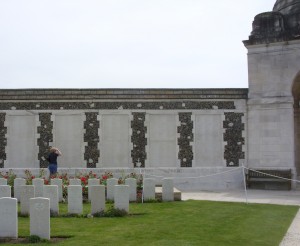
In July 2013 we were able to visit the Tyne Cot Memorial, and also the side of the field in Poelcapelle where Richard was known to have fallen –

We left small memorial crosses at both sites, on behalf of all the Agius descendants. The inscription read:
To Great Uncle Dickie on behalf of your Mother, Father, brothers, sisters and 300+ nephews and nieces. In Loving Memory…
Despite Arthur’s dedicated attempts to locate Richard’s body after the war, it may well be that his remains rest in an unmarked grave in the nearby Poelcapelle cemetery. There are 7500 graves on the site of which 6300 are unnamed, but many have a rank and unit noted. Sometime in the future it would be good to look and see if on one of the graves there is an inscription to a Captain in the 3rd London Regiment (Royal Fusiliers).


